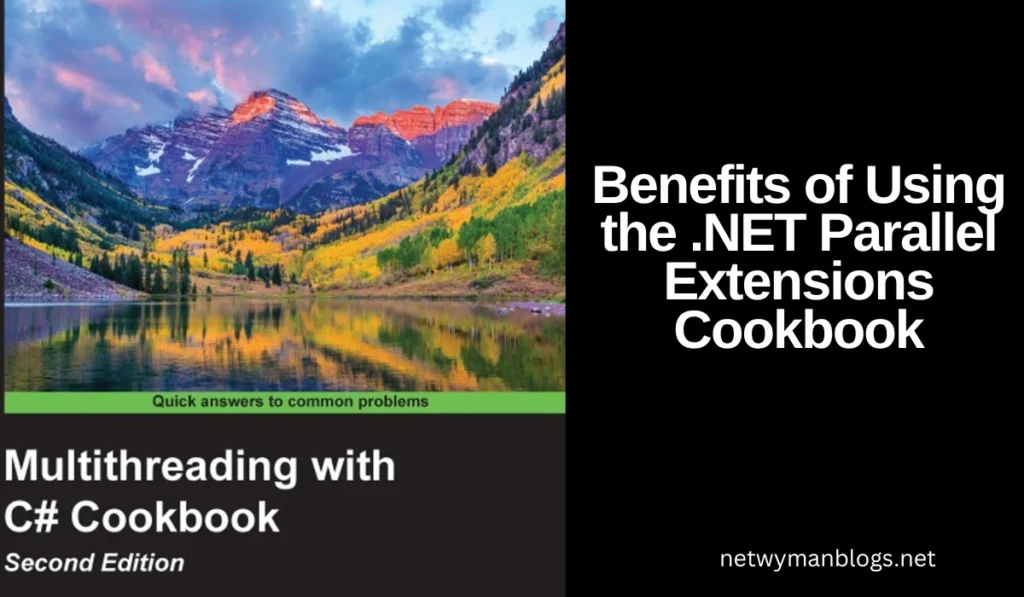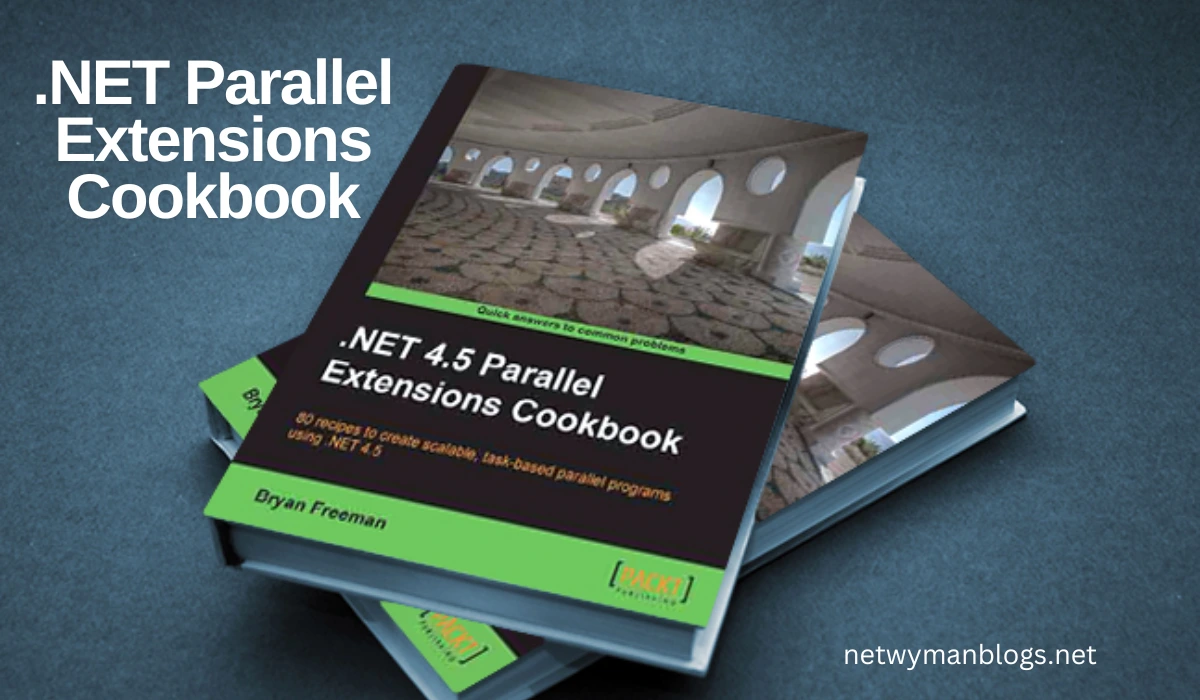In the fast-paced world of software development, the need for responsive, efficient, and scalable applications has become paramount. As technology evolves, developers are faced with the challenge of utilizing modern hardware effectively to meet user expectations. The .NET Parallel Extensions Cookbook serves as a vital guide for developers looking to embrace parallel programming and asynchronous solutions within the .NET framework.
Importance of Parallel Programming
Parallel programming is no longer a luxury but a necessity. With multi-core processors becoming the standard, single-threaded applications often fail to fully utilize the available hardware. This inefficiency can lead to slower applications and unsatisfied users. The .NET framework, with its advanced tools like the Task Parallel Library (TPL) and Parallel LINQ (PLINQ), offers a robust solution to these challenges. The .NET Parallel Extensions Cookbook dives into these tools, providing practical examples to unlock their full potential.
What is the .NET Parallel Extensions Cookbook?
The .NET Parallel Extensions Cookbook is more than just a technical book; it is a roadmap for developers navigating the complexities of asynchronous and parallel programming. Authored by Bryan Freeman, this resource delves deep into the tools and libraries of the .NET framework. It provides a wealth of recipes—step-by-step solutions—that guide developers in creating efficient, scalable, and reliable applications. While the primary focus is on the technology, the book also highlights best practices and common pitfalls to help developers avoid costly mistakes.
Read more: About technology and New strategies regarding blogging at Netwyman Blogs Website.
Key Tools Discussed in the Cookbook
The book focuses on several essential components of the .NET framework designed for parallel and asynchronous programming. These tools include:
Task Parallel Library (TPL)
The TPL simplifies the creation and management of tasks, abstracting much of the complexity traditionally associated with threads. It allows developers to write cleaner, more maintainable code while leveraging the full power of multi-core processors.
Parallel LINQ (PLINQ)
PLINQ extends the power of LINQ by introducing parallelism. It enables developers to process large datasets more efficiently by dividing tasks across multiple threads. This can significantly enhance performance without requiring extensive code rewrites.
Async and Await
The async/await pattern has revolutionized asynchronous programming in .NET. By allowing developers to write non-blocking code in a more natural and readable way, it ensures that applications remain responsive, even when performing time-intensive operations.
Read more: Car jerks when accelerating at low speeds automatic
Why the Cookbook Stands Out
One of the standout features of the .NET Parallel Extensions Cookbook is its accessibility. The book is structured in a way that caters to both beginners and experienced developers. Each chapter is packed with examples that demonstrate real-world applications of the tools and libraries discussed. For instance, the book covers scenarios such as processing large datasets, optimizing network calls, and building responsive user interfaces.
Additionally, the book emphasizes the importance of balancing performance with simplicity. While parallel programming offers significant advantages, it also comes with challenges like increased complexity and the risk of bugs. The cookbook provides practical advice on managing these challenges, such as using cancellation tokens and handling exceptions effectively.
Comparison of Key Parallel Programming Features
The table below highlights some of the key features of parallel programming in .NET, as covered in the .NET Parallel Extensions Cookbook.
| Feature | Description | Example Usage |
|---|---|---|
| Task Parallel Library | Manages and executes tasks | Task.Run(() => {...}) |
| Async and Await | Simplifies asynchronous programming | await Task.Delay(1000) |
| Parallel Loops | Processes collections in parallel | Parallel.ForEach(items, ...) |
| Cancellation Tokens | Allows tasks to be cancelled | tokenSource.Cancel() |
| Exception Handling | Manages errors in parallel tasks | try { await task; } catch {...} |
Benefits of Using the .NET Parallel Extensions Cookbook

The .NET Parallel Extensions Cookbook offers numerous benefits for developers. Firstly, it simplifies complex concepts, making parallel programming accessible to a wide audience. The practical examples and recipes allow developers to apply their knowledge immediately.
Secondly, the cookbook emphasizes best practices, helping developers avoid common mistakes. For example, it explains how to prevent race conditions and deadlocks, which are common pitfalls in parallel programming.
Lastly, the cookbook is a time-saver. Instead of spending hours researching solutions online, developers can refer to the book’s recipes to find quick answers. This efficiency is particularly valuable for professionals working on tight deadlines.
Practical Applications of the Cookbook
The .NET Parallel Extensions Cookbook is not just about theory; it is a practical guide that addresses common challenges faced by developers. For example, the book explains how to:
- Process large datasets efficiently using PLINQ and TPL.
- Build responsive applications by implementing asynchronous patterns.
- Optimize real-time systems, such as dashboards or analytics tools.
These recipes are invaluable for developers working on enterprise applications, where performance and scalability are critical. By following the guidance in the cookbook, developers can ensure that their applications make the most of modern hardware while maintaining stability and reliability.
Challenges and Limitations
While the .NET Parallel Extensions Cookbook is a powerful resource, it is not without its limitations. One of the primary challenges is its focus on console applications. While these examples are effective for demonstrating concepts, they may not directly translate to the kinds of applications most developers are building, such as web or mobile apps. Additionally, the cookbook assumes a certain level of familiarity with the .NET framework, which could make it less accessible to complete beginners.
Best Practices for Using Parallel Extensions
To get the most out of the tools discussed in the .NET Parallel Extensions developers should keep several best practices in mind. First, it is important to avoid overusing parallelism. While it can significantly enhance performance, not all tasks benefit from it. Developers should carefully evaluate whether a parallel solution is justified, considering the overhead involved.
Second, managing shared resources is critical in parallel programming. Without proper synchronization, issues like race conditions and deadlocks can arise, compromising the stability of the application. The cookbook provides valuable insights into avoiding these pitfalls, such as using locks and other synchronization primitives.
Read more: R-exmormon
| Aspect | Details |
|---|---|
| Author | Bryan Freeman |
| Focus | Parallel and asynchronous programming in .NET |
| Key Tools Covered | TPL, PLINQ, async/await |
| Strengths | Clear examples, practical recipes, accessibility |
| Limitations | Console application focus, assumes .NET familiarity |
| Ideal Audience | Beginners to experienced developers |
Frequently Asked Questions (FAQs)
What is the .NET Parallel Extensions Cookbook?
The .NET Parallel Extensions Cookbook is a guide by Bryan Freeman that provides practical solutions for implementing asynchronous and parallel programming in .NET.
Who is the cookbook for?
This book is ideal for both beginners and experienced developers who want to harness the power of .NET’s parallel programming tools.
What tools does the cookbook cover?
The book covers essential .NET tools like the Task Parallel Library (TPL), Parallel LINQ (PLINQ), and async/await.
Why is parallel programming important?
Parallel programming allows applications to utilize multi-core processors more effectively, enhancing performance and responsiveness.
Conclusion
The .NET Parallel Extensions Cookbook is an essential resource for developers looking to embrace the power of asynchronous and parallel programming. By providing clear explanations and practical examples, the book demystifies complex concepts and empowers developers to create modern, scalable applications. While it has its limitations, such as a focus on console applications, the cookbook remains an invaluable guide for anyone working with the .NET framework.
Whether you are new to parallel programming or looking to deepen your expertise, this book is a must-read.

